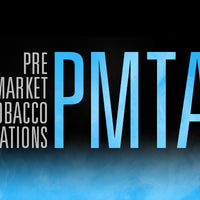In the first two parts of this series, we provided a breakdown of epidemiology related to e-cigs and expanded further with a little bit of experimental research 101. We also addressed the sensationalism of e-cig study results in the media and in academic publishing. Now we will look at the U.S. Food and Drug Administration’s process for prescription drug testing and approval to propose a path for where all of this e-cig research could eventually lead us. We will also examine the government’s future role in e-cig regulation and compare the proposed health benefits of e-cigs to the risks associated with legally prescribed drugs.
Mountains of E-Cig Research

If you’ve been following White Cloud’s blog, you are aware that there is close to a decade’s worth of research about e-cigs; however, over and over again we hear from the media and public health agencies that there is still not enough scientific research on e-cigs to know whether or not they are safe.
In fact, e-cig research started in 2008, and dozens of follow-up study have suggested that e-cigs are anywhere from 100 to 1000 times less dangerous than smoking tobacco cigarettes. While the degree of their safety is still under debate, it is widely accepted that they are safer than tobacco cigarettes, which are perfectly legal, regulated consumer goods. In the UK, BAT’s Voke became the first cig-a-like type product to gain regulatory approval through the MHRA, with a second product currently going through the review process.
Does E-Cig Research Meet FDA Standards?
Let’s compare the quantity and quality of e-cig research to the rigorous standards the FDA sets for prescription drugs. Development and approval of a prescription drug in the U.S. takes about 12 years to complete. Once a drug is approved, it goes to market accompanied by a list of side effects observed during clinical trials.
On average, pharmaceutical companies spend over $1 billion to develop just one new drug, from creating the drug itself to testing and research to clinical trials during the drug approval process. After a drug is developed, the drug’s creators conduct three-and-a-half years worth of in vitro scientific testing. The drug company can then submit an application to the FDA for approval to test the drug in humans.
After the FDA reviews the in vitro research and approves human testing, in vivo human studies are conducted in three phases: phase 1, a year long trial in which the drug is administered to 20-80 healthy volunteers to make sure the drug is safe; phase 2, a two-year process, which uses 100-300 volunteers to see if the drug is effective; and phase 3, a three-year process, which involves 1000-3000 volunteers to document potential side effects.
Prescription Drug Addiction: An Often Overlooked Problem

Part of the controversy surrounding e-cigs is their disputed addictive nature, however, hundreds of legal prescription drugs are very addictive and can cause severe withdrawal symptoms. The CDC estimates that 44 individuals die each day from overdosing on opioid prescription painkillers. That number is higher than daily deaths attributed to heroin and cocaine combined.
Nonetheless, health organizations and the news media continue to harp on the “possible health and safety issues” of e-cigs while ignoring that the number of patients receiving treatment for prescription painkiller addiction increased by 400 percent from 2004 to 2010.
The Thing About Side Effects
Many people are understandably concerned about possible side effects of e-cig use, but it is important to point out that all approved prescription drugs carry a laundry list of possible adverse effects, some of which are potentially deadly. For example, it is a documented fact that the diabetes medications Avandia and Actos are linked to increased risks of strokes, heart attacks and bladder cancer, yet thousands of diabetics take them because the benefits outweigh the risks. Actos has been banned in Germany, France and India, but it is still legally prescribed in the U.S. Usually, when a new side effect is documented for a drug, the FDA will add a warning label; drugs are rarely removed from the market unless the risks greatly outweigh the benefits.
The Dangers of Prescription Drugs vs. E-Cigs

Research has concluded that many legal prescription drugs may cause serious side effects, addiction, illnesses and even death. The FDA has approved Over 70 drugs in 2015. How does the FDA have time to review all of that research yet, if regulations of e-cigs goes through as proposed by the FDA, they will effectively ignore the possible benefits that e-cigs could potentially offer to public health. Research continues to point towards e-cigs being a means to helping people quit smoking tobacco cigarettes, which is another major killer across the globe.
A Better Path for E-Cigs
E-cigs are used by about 2.5 million Americans, many of whom are former smokers. It is time for testing to move beyond small sample sizes, puffing machines and lab rats. There would be an abundance of willing volunteers to participate in safety studies, and it is highly likely that e-cigs could meet the FDA’s requirements for a safe tobacco cessation device if only the support and funding were available.






